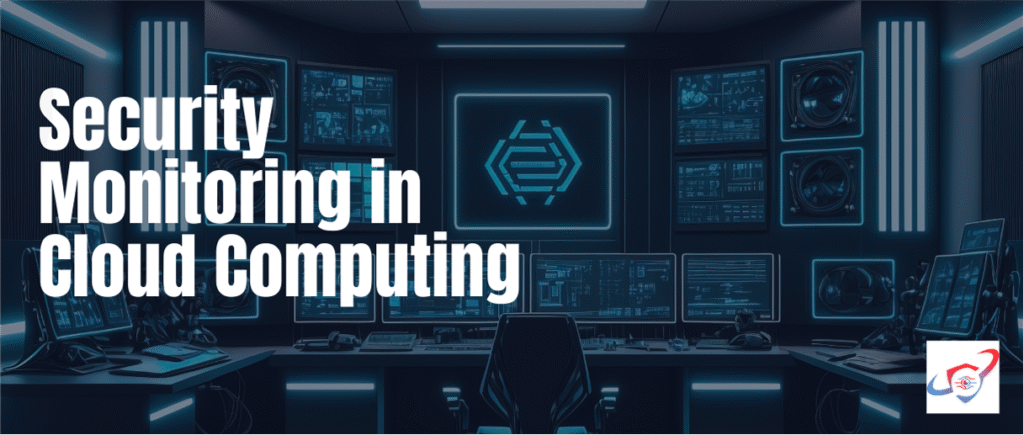Security Monitoring in Cloud Computing: Protecting Data in a Digital-First World
In this expanded guide, we’ll explore what cloud security monitoring is, why it matters, common challenges, emerging technologies, and actionable strategies to enhance your security posture.
Introduction
Cloud computing has transformed the way organizations store, process, and share information, offering unmatched scalability, flexibility, and cost efficiency. However, with this convenience comes increased exposure to cyber threats.
In this guide, we’ll cover:
-
What cloud security monitoring is
-
Why it matters
-
Common challenges and threats
-
Key tools and technologies
-
Best practices and future trends
What is Security Monitoring in Cloud Computing?
Security monitoring in the cloud involves:
-
Continuous Surveillance – Monitoring logs, events, and user activities across cloud resources.
-
Threat Detection – Identifying anomalies that may indicate a cyberattack or insider threat.
-
Incident Response – Taking swift action to stop an attack before it escalates.
-
Compliance Tracking – Ensuring adherence to regulatory requirements through auditing and reporting.
Unlike on-premises security, cloud monitoring requires native cloud tools, third-party integrations, and AI/ML to handle dynamic environments.
Why Security Monitoring is Critical in the Cloud
Cloud adoption is exploding, with Gartner predicting that over 85% of enterprises will have a cloud-first strategy by 2025. This rapid shift brings:
-
Expanded Attack Surface – Every new API or service is a potential entry point.
-
Data Mobility – Data is spread across multiple regions and clouds.
-
Compliance Demands – Businesses must align with global regulations.
-
Shared Responsibility – Cloud providers secure infrastructure, but you must secure your workloads.
Common Threats in Cloud Environments
Cloud systems face both traditional and emerging threats:
| Threat Type | Description | Example |
|---|---|---|
| Data Breaches | Unauthorized access to sensitive data | Misconfigured storage buckets |
| Account Hijacking | Stolen credentials granting admin rights | Phishing targeting cloud admins |
| Misconfigurations | Incorrect access settings or unpatched flaws | Public S3 buckets |
| Insider Threats | Employees misusing access | Disgruntled admin leaking data |
| DDoS Attacks | Overloading servers to disrupt availability | Flooding APIs with traffic |
| Malware Injection | Malicious code in apps | Infected containers or SaaS |
Core Components of Cloud Security Monitoring
-
Log Management & Analysis – Collecting logs to spot anomalies.
-
IDS/IPS – Detecting and blocking malicious traffic.
-
Cloud Security Posture Management (CSPM) – Detecting misconfigurations.
-
User Activity Monitoring – Tracking privileged access and logins.
-
Automated Incident Response – Using playbooks for instant remediation.
Key Tools and Technologies
-
Cloud-Native Tools – AWS CloudTrail, Azure Sentinel, Google Cloud SCC
-
SIEM Platforms – Splunk, IBM QRadar, LogRhythm
-
CSPM Solutions – Prisma Cloud, Check Point CloudGuard
-
EDR/XDR – CrowdStrike Falcon, SentinelOne
-
Container Security – Falco, Aqua Security
Best Practices for Cloud Security Monitoring
-
Adopt Zero Trust Principles – Never assume trust.
-
Enable Multi-Factor Authentication (MFA).
-
Encrypt Data at rest and in transit.
-
Automate Detection & Response.
-
Conduct Regular Audits.
-
Leverage AI/ML for predictive security.
Challenges in Cloud Monitoring
-
Visibility across multi-cloud environments.
-
Alert Fatigue from non-critical notifications.
-
Integration Complexity when merging logs.
-
Cost Management in large-scale monitoring.
The Future of Cloud Security Monitoring
-
AI-powered threat hunting
-
Security-as-Code in DevOps
-
Continuous compliance automation
-
Quantum-resistant security
-
Unified dashboards for hybrid/multi-cloud
Real-World Example
A startup on AWS enabled CloudTrail + GuardDuty + SIEM integration. Within weeks, they spotted unusual API calls from outside their region — signaling credential theft. Automated scripts disabled the account immediately, preventing a breach.
This shows how real-time monitoring not only detects threats but actively prevents damage.
Conclusion
Security monitoring in cloud computing is no longer optional — it’s essential. With real-time, automated, AI-driven monitoring, organizations can:
-
Detect threats early
-
Stay compliant
-
Protect brand trust
Those who embrace proactive monitoring will have a competitive edge in today’s high-risk digital landscape.

